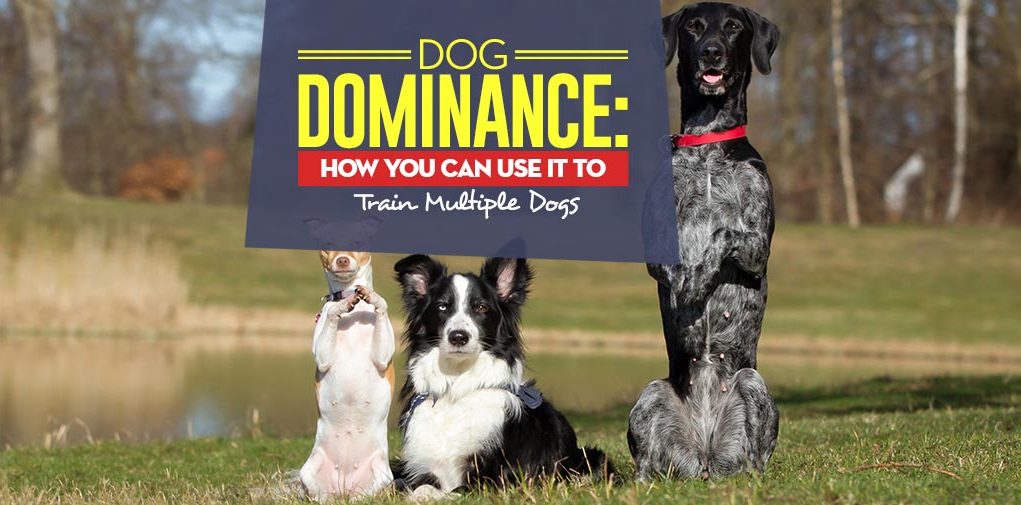Understanding dogs is a skill that comes only with practice and experience. A few behaviors that typical to dogs are easy to figure out. On the other hand, there are many canine behavioral traits that will take more knowledge and research to figure out. That's what I'm about to uncover here.
Allow me to begin with a personal story. The other night I put my dogs into a screened in back porch for them to spend the night. We typically let our dogs sleep in the mud room with a baby gate blocking the doorway to keep them inside. This setup works well if we make sure they use the bathroom in the yard before we settle them for the night.

We had gone on a walk around the lake earlier that evening and a few of them had discovered something that was quite dead. When they came out of the woods bathed in a putrid smell, we decided to let them sleep the night in the screened in porch outside.
The next morning we came out to the back porch to see four screened windows completely shredded. Unfortunately, one or two of the dogs swallowed some rotting meat that didn’t sit well in their stomachs. They did everything in their power to find some grass.
It was easy to smell what had happened and realize why the dogs reacted as they did. They knew using the bathroom on the concrete was a big “no-no,” so they destroyed the screen windows to escape in time instead. I can't blame them.
On the other hand, sometimes there are deeper processes at play in your dog’s mind that may take some research and experimentation to understand. Getting a grasp of what I like to call “dog psychology” can help you get to know your pet better. Using dog training psychology principles can also help you learn how to train your canine in a way that is easier for the dog to learn and understand.
Here's what you need to know about dog training psychology and how to use these principles to your advantage.
RECOMMENDED: 10 Psychological Dog Training Tricks
Dog Dominance Science
How You Can Use It to Train Dogs
Understanding Dog Dominance
This is not going to be an article about the misinterpreted understanding of dog dominance training using punishment-based techniques as those often attributed to famous dog trainer Cesar Milan. This myth has been dispelled many times, but my favorite article on the subject is from Dr Sophia Yin, who also published studies on it.
Instead, we're going to take a look at scientific studies on how dominance is established among canines, and how you can use that to train multiple dogs in your household.
Through studying dog social structures, researchers have come up with a term that describes how dogs relate to each other which is commonly known as dominance. Dominance is a relative description of which dog takes more authority in leadership compared with which dogs are more subordinate by following the leader.
If you own more than one dog, you may have noticed which dog typically runs the show. When it comes to feeding time, going for a walk, or bedtime, the dominant dogs usually gets its way, and the other dogs defer to this “alpha dog”. This has been further confirmed in a very recent 2017 study on leadership and independence of domesticated dogs.
For decades, scientists have studied how dominance in dogs relates to their desire to explore, their wish to compete, and most importantly their ability to learn. In one study, a group of researchers decided to test how dominance relates to how unleashed dogs explore together on a walk.
Scientists took a group of six dogs belonging to the same household and attached GPS devices onto each of the dogs collars. They were able then to map each of the dogs individuals paths (running speed, and distance from the owner) during fourteen 30-40 minute walks.
They then compared this data with personality questionnaires given to the owner regarding each of the dogs. The findings from this exploration test were quite revealing.
The study showed that dogs typically exchange the leadership role 50-85% of the time during their walk.
In other words, the leader and follower roles of dogs were interchangeable for the most part. However, on longer time scales, a general trend for which dog led more developed. These findings were hierarchical and correlated with age, dominance rank, trainability, controllability, and aggression measures noted in the personality questionnaires.
The takeaway here is that the researchers concluded that by only noticing how dogs go on a walk, a detailed personality profile for each of the dogs could be inferred. Something to keep in mind next time you’re out walking your dogs.
VIDEO: How To Train A Dog To Walk On A Leash
“I’m Top Dog!”
Aggression and the desire to explore can be dominance clues seen at very young ages in some puppies. In another study, researchers looked at the developing social structure of five German Shepherd puppies when they were five weeks, eight weeks, and eleven weeks old.
They implemented a “bone-in-pen” test to measure which puppy was more dominant in competing for and owning the bone. This observation was also compared with data noting which puppies were more confident and wished to explore their surroundings.
The study concluded that the most exploratory pups were also more competitive and showed higher levels of dominance in their puppy pack.
Additionally, this research showed how dominance, which leads to hierarchy and a pack mentality, is something which intrinsically emerges very quickly in young dogs without any exterior conditioning.
Can you Teach a Dominate Dog New Tricks?
Lastly, in a recent study, scientists took a look at whether or not dominance affects a dog’s ability to learn. Researchers took a group of dogs from multi-dog homes and segregated them into dominant or subordinate groups based on the owners answers to dog personality questionnaires.
Scientists then put each of these groups of dogs through a simple obstacle course to see how well the dominant and subordinate dogs were able to detour around a V-shaped fence. Without any demonstration, both groups of dogs figured out how to get around the barrier in the same amount of time.
They then demonstrated the correct way to navigate around the V-shaped fence using an unfamiliar dog and human. The dominate dogs were not able to learn from unfamiliar dogs, whereas the subordinate dogs quickly noticed how the new dog easily detoured around the fence.
Finally, when the human demonstrated how to navigate around the detour, both the subordinate and dominant dogs learned the correct method with similar success. These findings illustrate how important social structure is between dogs and how dominance plays a significant role in behavioral learning.
Additionally, this study showed how both subordinate and dominant dogs take social cues and directions from humans. This research suggests that dogs, regardless of their personality, view their owners without the lens of dominance.
RECOMMENDED: 25 Best Dog Training Books for Beginners and Advanced
How does this help me train my dog?
Even if you only own one dog, understanding the social structure of dogs helps you discover the personality of your dog and how to approach training your canine.
Identifying the dominant dog can help you when you are teaching what is and what isn’t acceptable to a group of dogs. When you focus on training the dominant dog, it’s likely that the other dogs will also through the chain of command.
It’s also wonderful to realize that as their owner, you don’t have to compete with your alpha dog. Both dominant and subordinate dogs will look to you to condone or reject certain behaviors. For this reason it is important to use behavioral learning by being consistent with your dogs in what is acceptable behavior and what isn’t.
In fact, you can use positive interactions to enforce positive behavior using the powerful chemistry of Oxytocin. Research has been fairly clear in how oxytocin works in relation to our dogs' love for us, and vice versa. Here's an article explaining this.
 On the other hand, if you want to avoid certain negative behaviors like dogs begging at the table for food, you must be consistent in how you treat your dogs. Establishing specific rules about when and how you feed your dogs can ensure they don’t get into fights and that they know that begging for food isn’t allowed.
On the other hand, if you want to avoid certain negative behaviors like dogs begging at the table for food, you must be consistent in how you treat your dogs. Establishing specific rules about when and how you feed your dogs can ensure they don’t get into fights and that they know that begging for food isn’t allowed.
Consistency is the number one way to train your dog. Within the dog social structure, the dominant dog is consistent in how it leads the other dogs. Similarly, both dominant and subordinate dogs look to you to be consistent in your leading, and they will build their behavior by experience upon experience in trusting your guidance.
READ NEXT: How To Train An Urban Dog – Tricks to Turn Regular Walks Into Training Opportunities














